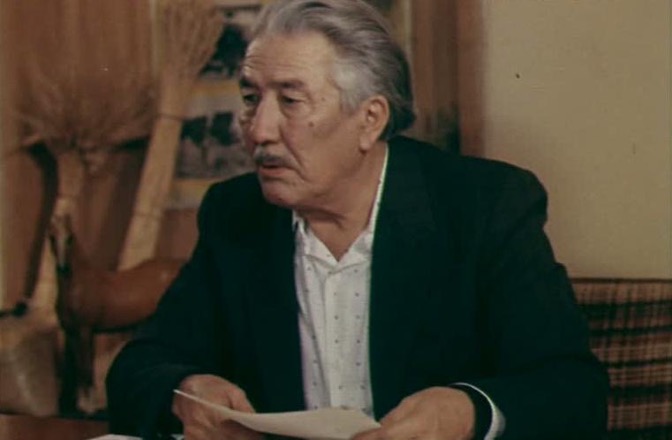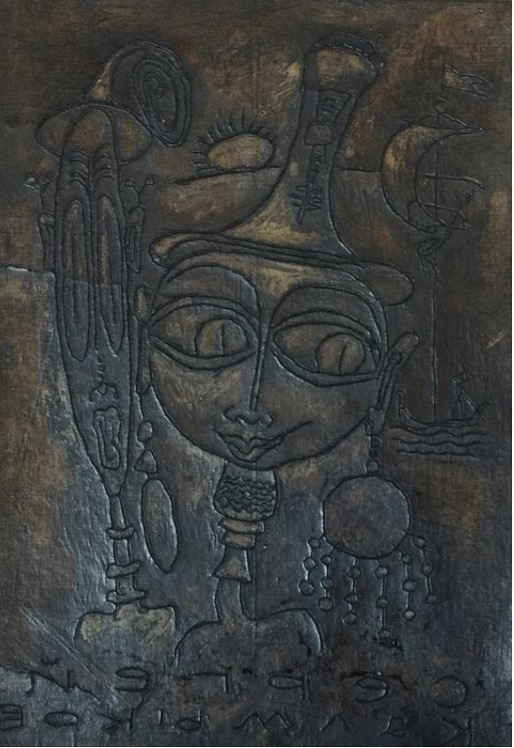The birth of graphic artin Kazakhstan.
Graphic art is the oldest kind of artistic and creative activity of a person. This is confirmed by the rock paintings of the Bronze Age, found in many countries of the world. There are a great many of them in Kazakhstan, and they are usually located not in isolated cases, but combined into whole complexes that fulfill an important informational and ritual mission.
Drawing, line is the basis of fine art, so the process of mastering artistic tools begins from here. This also happened in Kazakhstan, when in the 30s Kazakh artists began to work in the field of artistic creativity that was not traditional for the national culture. It was with graphic works that the development of the national art school of the European cultural type began.
The first graphic works of the founder of the Kazakh art school Abylkhan Kasteev appeared in the late 20s and early 30s. He studied at the private studio of N. Khludov, where he gained skills in drawing, composition and watercolor, and later his work developed independently. Thanks to his natural talent, subtle observation, sincerity in embodying the idea that captured the artist, Kasteev created works beyond the control of time, with his own aesthetic system, bearing the uniqueness of the national worldview.
Khodjaakhmet and Kulakhmet Khodjikov, representatives of the famous creative dynasty, were the first Kazakh artists who received professional training at art and educational institutes in Moscow. Their works at exhibitions in the 30s attracted by their bright individuality, free possession of compositional space in solving complex subjects chosen by the authors from the surrounding life. Aubakir Ismailov came to art very young. He was attracted by the "caravan of artists", which held the first traveling exhibition in Kazakhstan in 1928. Already the first sketches of a 15-year-old teenager on the topic of mining work, which he did in Karaganda, demonstrated the author's keen vision, the ability to concisely and expressively convey the character of the depicted motif.
These artists were the first to master creative tools that were not traditional for their own culture. Some of them, for example, Kasteev, had to go through the condemnation of the elders, who believed that such activities were incompatible with the established way of life.
It is always not easy to be pioneers, but open to everything new, convinced of the correctness of the chosen path, these people laid the foundations of a new artistic thinking during the difficult time of the formation in Kazakhstan of the first stages of a culture of a universal, essentially Eurasian type.

In many ways, the successful development of this process was facilitated by the fact that in Kazakhstan and in particular the city of Alma-Ata, where the main creative forces were consolidated, a bright international professional and creative environment developed. Since 1928, V.I. Antoshchenko-Olenev, a graduate of VKhUTEMAS, lived and worked in Alma-Ata. A number of his works are known, executed in the 30s in the technique of linocut, although the peak of the artist's work falls on a later time in the 60s, when he created a number of portraits of famous personalities who have done a lot in the field of art and literature of Kazakhstan. In the 1990s, A. Rittich, a graduate of the Munich Academy of Arts, came to Alma-Ata, who brilliantly mastered the method of classical realism not only in painting, but also in watercolor.
At the first exhibitions of this period, the talented graphic artist L. Gerbanovsky was interestingly presented, who did not have time to fully express himself — he died in the early years of the Great Patriotic War. A native of Verniy, a graduate of the Graphic faculty of the USSR Academy of Arts in Leningrad, G.A. Brylov, a member of the AHRR, took an active part in the organization of the Union of Artists of Kazakhstan. He was elected the first chairman of this first creative union in the country at the 1st Republican Congress in 1940. Social work did not prevent Brylov from being creative. He actively exhibited, conducted classes with young artists on graphic art techniques, he published several books: one of them was published back in 1931 (Izogiz, Moscow), its theme - "Illustrations in cinema, magazine and newspaper" reveals the specifics of artistic solutions of this genre in accordance with the designated tasks, the other is devoted to techniques of printed graphics.
During the war years, Alma-Ata saved the lives of many famous artists who came from Moscow, Leningrad, Kiev, Kharkov. Someone was evacuated (as R. Velikanova and T. Glebova, D. Mitrokhin, Kukrynik, etc.) the last student of Malevich V.Sterligov got to Kazakhstan twice - the first time he was expelled from Leningrad in connection with an attempt on Kirov's life (which had nothing to do with), the second time after a concussion at the front. All the well-known established masters who arrived joined the creative life, actively worked and exhibited. In. Sterligov lectured on fresco painting, studied Kazakh traditional art, and, perhaps, Kazakh ornamental art further influenced the creation of his author's concept of a curved line - a derivative of the cupola (B. Barmankulov) painting system, which he developed after returning to Leningrad. T. Glebova is a follower of the principles of the analytical school P. Filonova, lived in Kazakhstan for three years. Together with other artists, she made plein-air trips to the vicinity of Almaty. Her full-scale drawings, representing the observation of life unfamiliar to her in the Kazakh household environment, carry with all the characteristic images a keen sense of time (40s) and intonational transformation of the plastic tools of aesthetic qualities of another culture.
T. Glebova introduced P.Ya. Saltzman into Filonov's circle, who became perhaps the most consistent researcher and further developer of the main postulates of his analytical school. The atomization of pictorial matter, which became the principle of his artistic method, determined the special aesthetics of Saltzman's works. His images, despite their detachment from reality, due to their complex psychological content and the special property of artistic solutions, where the main thing is the elusive vibration of a color fabric woven from tiny watercolor strokes, extrapolate a powerful spiritual vitality.
Sergey Kalmykov, who came to Kazakhstan in 1935, lived here most of his life. His works, according to their artistic ideas and author's philosophy, did not fit into the general line of formation of the national art school, but for artists, for a creative environment remote from famous cultural centers, he, as the brightest representative of the artistic avant—garde of the twentieth century, fulfilled a special mission - demonstrating what a rise in artistic thought can give true creative freedom. Graphics were a kind of experimental field for Kalmykov. He drew a lot and constantly with a pencil, loved to work in watercolor, created monotypes, cut on cardboard, then made one or two prints from it, called such sheets etchings. It was in his graphic works that his artistic and plastic concepts were born, which he then justified theoretically and embodied in other formats and techniques.

Since the early 50s, the artistic environment of Kazakhstan has been actively included K.Y. Baranov. Initially, he worked as an illustrator. He designed a significant number of books by Kazakh writers, later, at the end of 50-60, industrial themes appeared in his work, which during this period became one of the leading ones in the work of many artists for the entire Soviet Union.
An important event related to the opening in the second half of the 50s with the participation of V.I. Antoshchenko-Olenev and K.Ya. Baranov at the Union of Artists of Kazakhstan of an experimental graphic workshop, which allows to produce large print runs of prints, which were in great demand in those years, contributed to the significant rise of graphic art in Kazakhstan especially in the children's education sector.
At the exhibitions of the 50s, the Kazakhstani audience first got acquainted with the work of E.A.Govorova, a student of M. Dobuzhinsky and Ya. Tsioglinsky, a participant in the exhibitions of the famous Russian avant-garde group "World of Art". Govorova lived in Kazakhstan for 18 years, of which she spent 8 in Stalin's camps for careless statements in a positive way about Picasso's drawings (The History of Art of Kazakhstan by B. Barmankulov. Volume 2, page 111). Her ink and pen drawings, elegant, masterfully executed, are dedicated to the nature of Kazakhstan, in which her soul of a great artist saw the enduring beauty and important meaning of the divine way of life.




